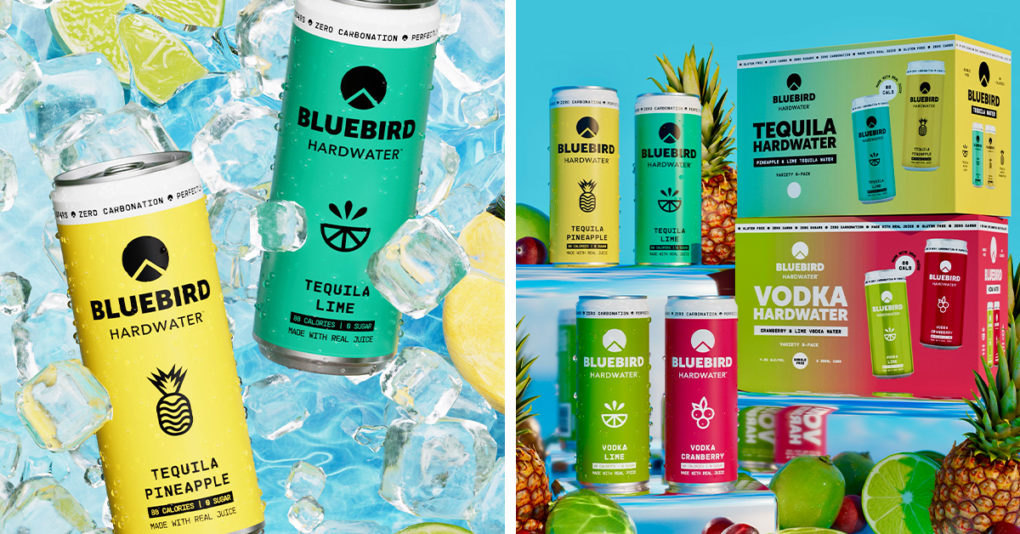 It’s been almost two years since Bluebird Hardwater launched, and as one of the first canned beverages combining spirits with flat mineral water, it’s now in good company.
It’s been almost two years since Bluebird Hardwater launched, and as one of the first canned beverages combining spirits with flat mineral water, it’s now in good company.
With consumers sharing their anti-carbonation preferences, non-carbonated ready-to-drink products have been popping up more in the last few years: canned cocktails like Mom Water, Molson Coors’ Happy Thursday and Surfside have all made the feature a part of their brand offering.
In the meantime, Bluebird Hardwater founder William Blum used his first product edition – a line of vodka, tequila and whiskey waters at 4% ABV in a fairly stark packaging – to test the (flat) waters. Now, in the two months since a new round of flavors and packaging hit shelves, the brand has already sold half of what its original product line sold in its entire lifespan. Blum says part of the sales boost comes after the team learned the correct way to signal immediately to consumers that the package is a non-seltzer.
“We’re pushing the idea that it’s a hard water, that’s the biggest thing over our logo even,” he said.
Get In Where You Fit In: Shifting Pack Format, Flavors
Following several consumer studies and feedback from retailers, the Bluebird team learned that shoppers didn’t understand the term “no bubbles” but bubble-free and zero carbonation resonated. Both are front and center on the newly colorful packaging now.
Retailers were influential in helping introduce flavors— a major factor in driving RTD purchases. The team tested 80 flavor combinations and settled on approachable favorites: Vodka Water + Lime, Vodka Water + Cranberry, Tequila Water + Lime and Tequila Water + Pineapple.
But retailers also provided critical insight into combinations and pack size strategies. Studies indicated consumers desired two flavors instead of the more common four in a variety pack. Retailers reported that 8-packs were moving faster than 4-packs, and desired skinnier 12 oz cans in a package that can fit vertically as well as horizontally to allow flexibility with shelf display.
After re-entering into Tennessee, Florida and New York, the new cans have also made their way into California, the company’s largest market. Blum said for now the company will focus on driving more sales in its current states versus expanding geographically.
The brand is carried in 130 total accounts, with 60% of sales coming from national chains and 40% from independent retailers. That sales ratio reflects the unique market conditions in states like New York and Tennessee, where spirits can’t be sold in grocery stores. But as a small team with a couple reps in each state, the company is focused on chains where it sells the majority of volume. The independent accounts, however, are proving to be a vital part of the company’s marketing strategy, allowing for more experimentation with displays and the ability to conduct tastings.
“You can’t sample at a lot of the chains in California, but you can at a lot of the independents,” he said. “So the independents have been key for us marketing our product and getting consumers to try it, especially around our chain spaces.”
Through studies and in-person tastings, the team has also narrowed down their audience: largely younger consumers who “are willing to change their ways,” he said, mostly aged 21-30. Another reveal?
The drinkers who are moderating their drinking or flirting with a sober lifestyle are also opting for a low-abv, simple ingredient cocktail.
“For people that really, really love our product, they’re not extremely frequent drinkers,” he said. “They’re only drinking a few times a month.”